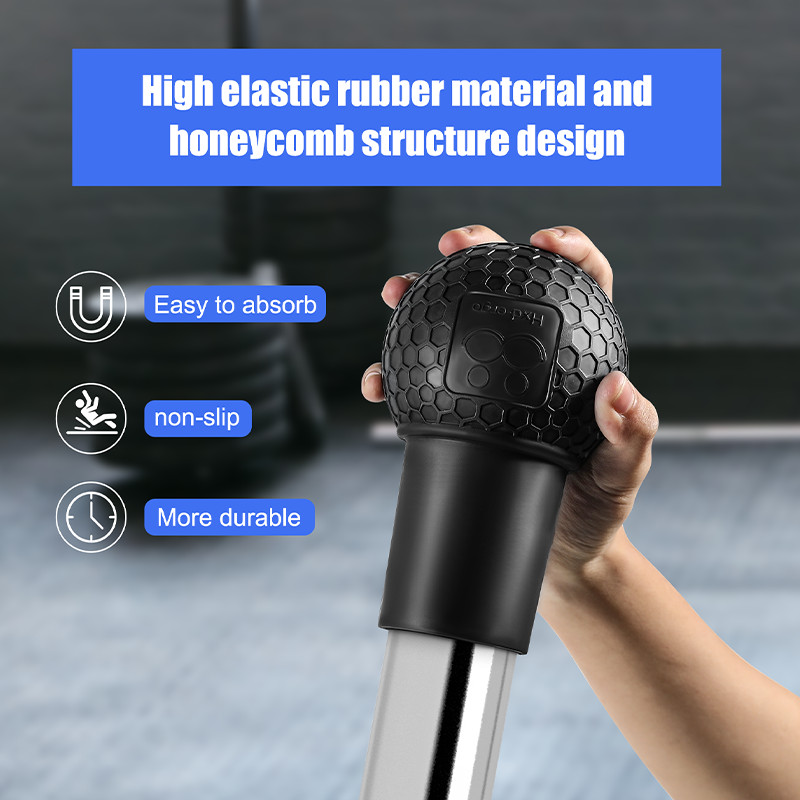Add this move to your back building arsenal for massive upper body gains
Just because you don't have an huge array of equipment or a gym membership, doesn't mean you need to miss out on making huge training gains. The t-bar row requires just a single barbell and a few plates and will open up a huge amount of moves and hit your body from every conceivable angle. Triceps Rope With Handle

So, if you're in the hunt for a thicker, stronger back, then it's time to take the t-bar row seriously. Here, we cover how to do the t-bar row, the muscles worked, the benefits, the variations and we answer your row related FAQs.
Because of the way the t-bar row is set up, you can shift more weight in comparison to the bent-over row. This accumulation of increased weight will mean you have access to bigger strength gains.
The t-bar row primarily targets the muscles of the back, including the lats, rhomboids, traps and rear delts, helping to build a strong and well-rounded back. The set up of the t-bar row means you can work closer to failure more safely and therefore see an increase in muscle mass.
Compared to barbell rows, the t-bar row places little less stress on the lower back, making it a safer option for people with back issues.
T-bar rows can be modified easily to accommodate different fitness levels and training goals by adjusting the weight and grip position. The equipment is easy to come by in the gym, therefore cutting down on machine queuing time.
Doing the t-bar row can contribute to better posture by strengthening the entirety of the back.
The most appealing thing about t-bar rows is that they are easy to set up in a multitude of ways:
Note: You can use a towel instead of a close grip attachment to encourage a neutral grip.
How: Hinge at the hips until your chest is parallel to the floor, dumbbells hanging at your shins. Maintaining a flat back, row both dumbbells towards your torso, squeeze your shoulder blades together and lower under control to the start before repeating.
Why: If you haven't quite mastered the t-bar row and want to get used to the hinge position, the dumbbell bent-over row with some light to moderate weights is a great place to start.
How: Stand sideways at the end of your bar, hinge down with a flat back and grip the bar with one hand. Keeping your core tight and torso as steady as possible, draw your elbow back, behind your body, pulling the bar towards your hips. Pause here, then slowly lower the weight to the floor before repeating.
Why: The meadows row reduces should joint stress and is an efficient exercise to build equal limb strength.
How: Deadlift your barbell and hinge at the hips until your chest is parallel to the floor, barbell hanging at your shins. Maintaining a flat back, row the bar towards your hips, squeezing your shoulder blades together. Lower under control to the start before repeating.
Why: The barbell bent over row is a staple compound move in many strength programmes. You can use a variety of different grips to hit different areas of your back, with a large emphasis on core and glute strength.
How: Send the hips behind the heels so your hands reach the bar with a wide grip. Your hips can be slightly higher than your torso with your head in line and a bend in the knees. Pull the bar powerfully towards your hips. Keep the elbows slightly below your shoulders in an arrow shape. Return the weight to the floor, you don't need to control the weight back down.
Why: The pendlay row is one of the most underutilised exercises for exceptional power and adding mass. Say goodbye to slow and sustained bodybuilding tempo, these reps are to be completed explosively.
How: Set the cable height in line with your chest. You can be seated on the floor or on a bench. Use the close grip attachment. Sit with your chest lifted, shoulders away from your ears and core engaged. Pull the attachment to the bottom of your ribcage, hold for a beat and then release ready to repeat. Imagine 'holding a pencil between your shoulder blades' with each rep.
Why: The seated cable row is the perfect exercise for all levels. It teaches the correct row movement without stress on the lower back.
Kate is a fitness writer for Men’s Health UK where she contributes regular workouts, training tips and nutrition guides. She has a post graduate diploma in Sports Performance Nutrition and before joining Men’s Health she was a nutritionist, fitness writer and personal trainer with over 5k hours coaching on the gym floor. Kate has a keen interest in volunteering for animal shelters and when she isn’t lifting weights in her garden, she can be found walking her rescue dog.
SAS WDW: The New Celebrity Recruits
The Best Advent Calendars for Men This Christmas
World's Strongest Man Started Out as a Marathoner
The Press-Up 'Matrix' Tom Hardy Used to Bulk Up
What's in Ollie Marchon's Locker
What 100 Burpees a Day Did to This Guy's Body
Eddie Hearn: Sleep and Recovery Is My Weakness
David Beckham Shares Shirtless Holiday Snaps
Zac Efron Shows Off Physique in Shirtless Photos
The Office Workers' Power Move Blitzes Back Pain
Will Smith Looks Jacked in Fitness Journey Update
Devil's Advocate: Why Foam Rolling Isn’t Worth the
Men's Health, Part of the Hearst UK Wellbeing Network
We earn a commission for products purchased through some links in this article.

Barbell Attachments Landmine ©2023 Hearst UK is the trading name of the National Magazine Company Ltd, 30 Panton Street, Leicester Square, London, SW1Y 4AJ. Registered in England 112955. All rights reserved.